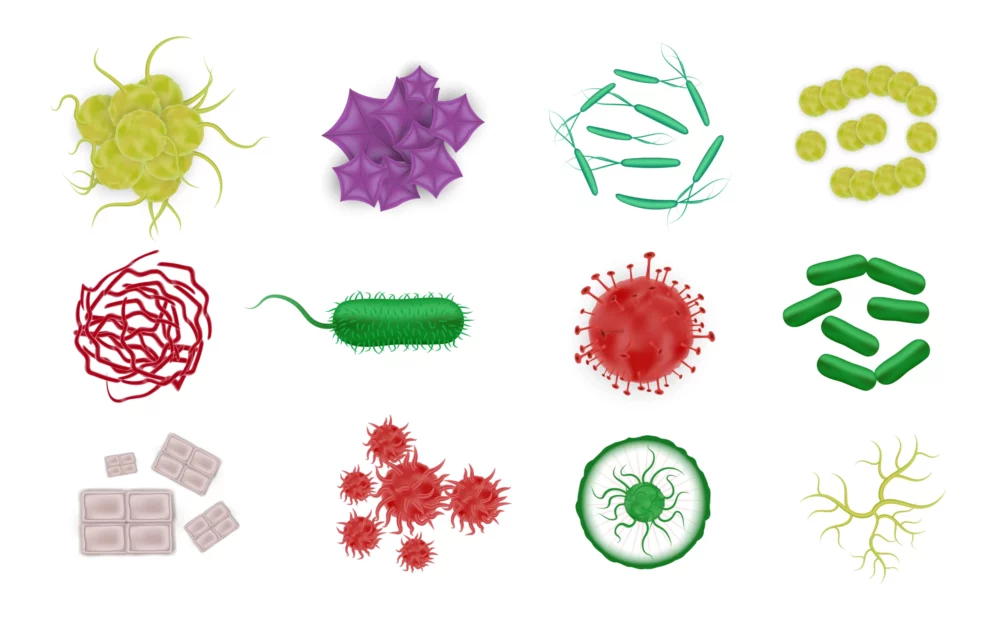Reproduction is a fundamental biological process that ensures the continuation of life on Earth. It is a fascinating and diverse field of study, as organisms have evolved a wide range of strategies to reproduce and pass on their genetic material to the next generation. In this educational blog, we will explore the various mechanisms of reproduction in organisms, from the simplest forms in unicellular life to the more complex methods employed by multicellular organisms.
Reproduction in Unicellular Organisms
1) Binary Fission:
Unicellular organisms, such as bacteria and archaea, often reproduce through binary fission. This asexual process involves the division of a single parent cell into two identical daughter cells. The parent cell’s genetic material is duplicated, and then the cell splits into two, each with a complete set of genetic information. This process is incredibly efficient and allows for rapid population growth.
2) Budding:
Some unicellular organisms, like yeasts and certain protozoa, use a method known as budding for reproduction. During budding, a small outgrowth, or “bud,” forms on the parent cell, and it eventually detaches to become a new, independent cell. The genetic information is replicated in the bud before separation, resulting in a genetically identical offspring.
3) Spore Formation:
In addition to binary fission and budding, unicellular organisms can also produce spores for reproduction. Spores are resistant, specialized cells that can survive adverse conditions. They are often released into the environment, where they can develop into new individuals when conditions become favorable. This mechanism is commonly observed in fungi and some types of algae.
Reproduction in Multicellular Organisms
1) Sexual Reproduction:
Multicellular organisms, including plants, animals, and many fungi, often reproduce sexually. Sexual reproduction involves the fusion of specialized reproductive cells called gametes, resulting in offspring with a combination of genetic material from two parents. There are two primary types of sexual reproduction: isogamy (gametes are similar in size and structure) and anisogamy (gametes differ in size, usually with one being smaller, or microgamete, and the other being larger, or macrogamete).
2) Asexual Reproduction:
While sexual reproduction is the norm for most multicellular organisms, some have evolved asexual reproduction strategies. Asexual reproduction involves the creation of offspring without the fusion of gametes and results in genetically identical individuals, often referred to as clones. Various mechanisms are employed for asexual reproduction:
a. Budding: Some multicellular organisms, like hydra and certain plants, can reproduce through budding, similar to unicellular organisms.
b. Fragmentation: In this process, a parent organism breaks into fragments, and each fragment can grow into a new individual. This method is common in starfish and some types of worms.
c. Parthenogenesis: In parthenogenesis, an unfertilized egg develops into an offspring. It is observed in some reptiles, insects, and certain fish species.
d. Vegetative Propagation: Many plants can reproduce asexually through vegetative propagation. This includes methods like rhizomes, runners, and plant cuttings.
3) Alternation of Generations:
Some multicellular organisms, particularly plants and certain algae, exhibit a unique reproductive strategy known as alternation of generations. In these organisms, there are two distinct multicellular phases in the life cycle: a haploid (1n) phase (gametophyte) and a diploid (2n) phase (sporophyte). Both phases give rise to each other in a regular cycle. For example, in the life cycle of a fern, the sporophyte produces spores, which develop into gametophytes, and the gametophytes produce gametes that fuse to form a new sporophyte.
4) Complex Sexual Reproduction:
Many animals, such as mammals and birds, have evolved complex sexual reproduction strategies. In these organisms, internal fertilization is common, where the fusion of gametes occurs within the female’s reproductive tract. These organisms often exhibit sexual dimorphism, where males and females have distinct reproductive structures and roles.
Reproduction in organisms is a dynamic and essential aspect of life on Earth, with a wide array of mechanisms to ensure the continuation of species. The diversity of reproductive strategies, from simple processes like binary fission and budding in unicellular organisms to complex methods like sexual reproduction in multicellular organisms, showcases the remarkable adaptability and evolution of life. Understanding these various mechanisms helps us appreciate the beauty and complexity of the natural world and aids in efforts to conserve and manage biodiversity for future generations.





Leave a Reply
You must be logged in to post a comment.